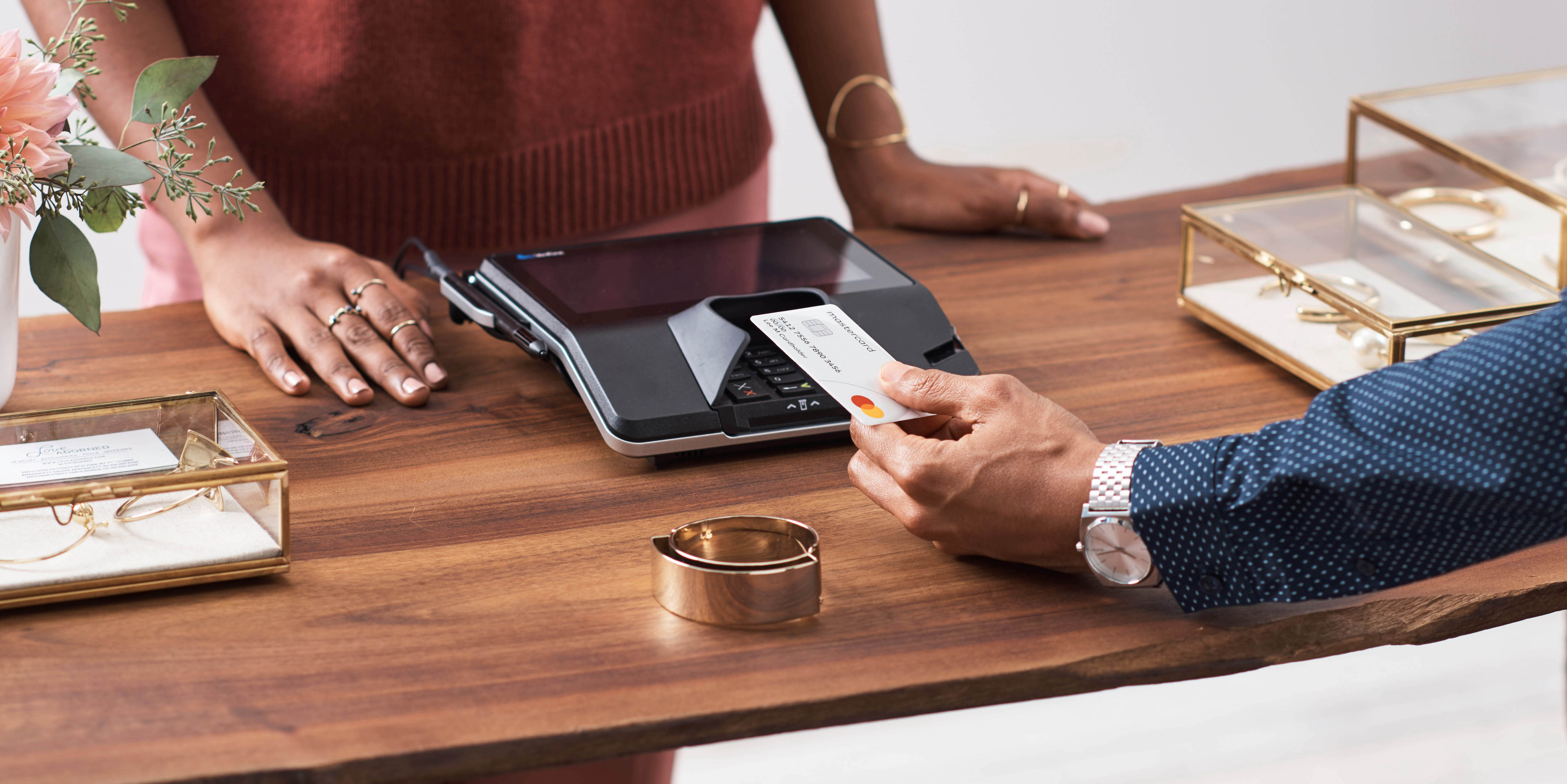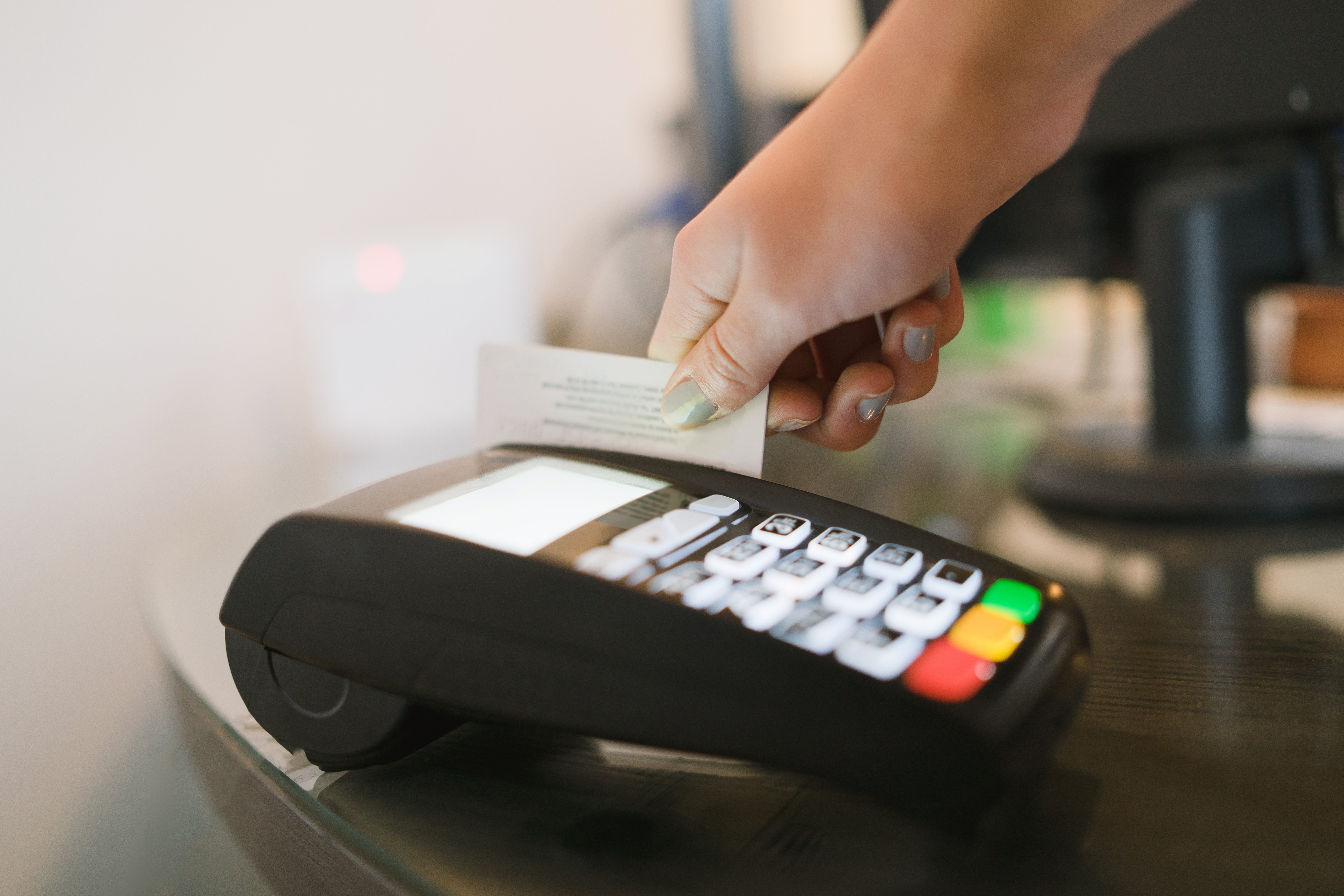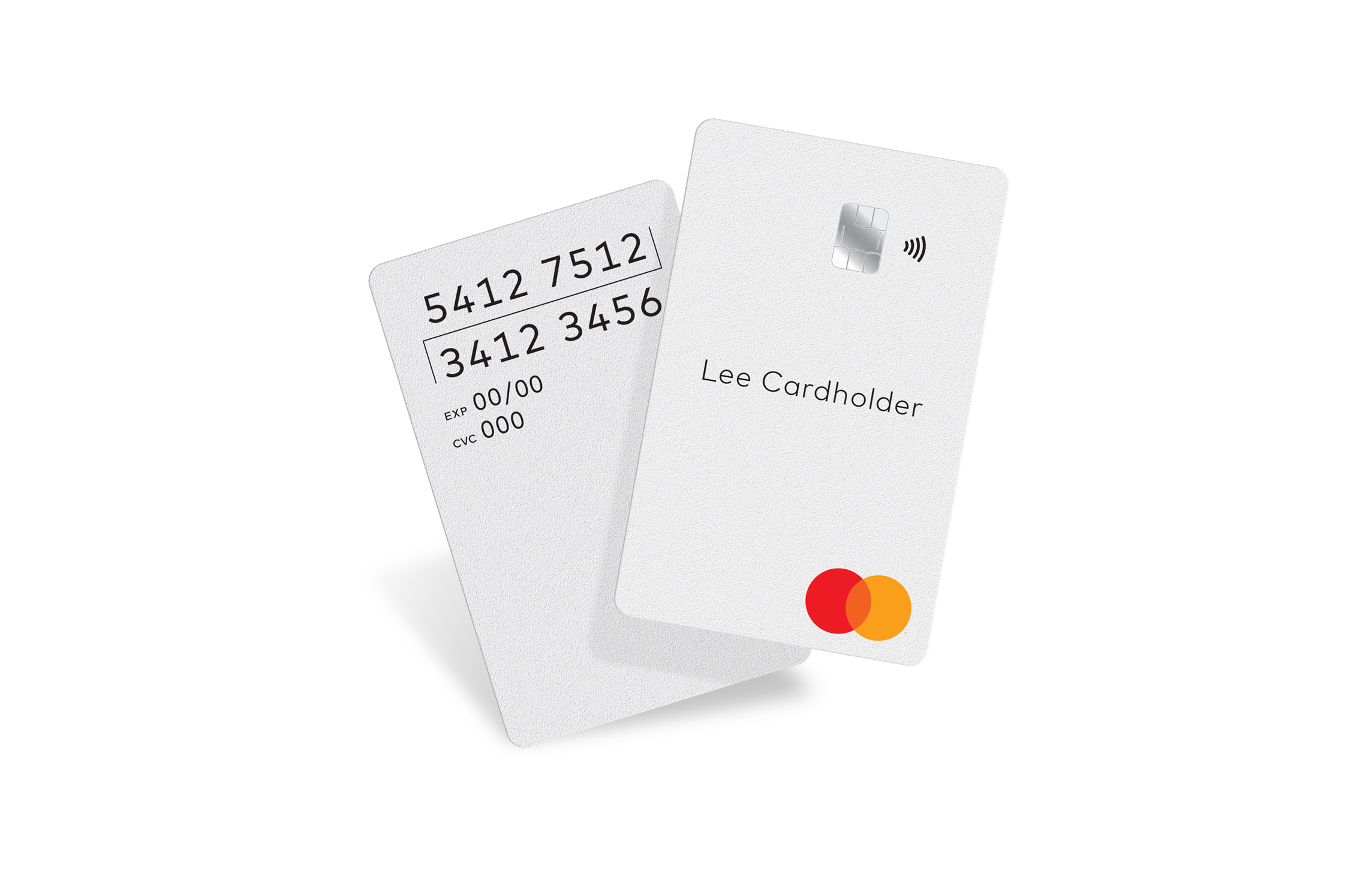Swiping left on magnetic stripes
August 12, 2021 | By Vicki Hyman
It was hard out there for checkout clerks.
In the early age of modern credit cards, they had to write down account information for each card-carrying customer by hand. Later, they used flatbed imprinting machines to record the card information on carbon paper packets, the sound of the swiping of the handle earning them the name, zip-zap machines. (They were also dubbed “knuckle-busters” by the unfortunate clerks who skinned their fingers on the embossing plate.)
And how could clerks tell whether the customer was good for the purchase? They couldn’t. Credit card companies would circulate a list of bad account numbers each month, and the merchant would have to compare the customers’ cards against the list.
The arrival of the magnetic stripe changed all that. An early 1960s innovation largely credited to IBM, the magnetic stripe allowed banks to encode card information onto magnetic tape laminated to the back. It paved the way for electronic payment terminals and chip cards, offering more security and real-time authorization while making it easier for businesses of all sizes to accept cards. That thin stripe has remained a fixture on billions of payment cards for decades, even as technology has evolved.
But now the magnetic stripe is reaching its expiration date with Mastercard becoming the first payments network to phase it out.

The shift away from the magnetic stripe points to both consumers changing habits for payments and the development of newer technologies. Today’s chip cards are powered by microprocessors that are much more capable and secure, and many are also embedded with tiny antennae that enable contactless transactions. Biometric cards, which combine fingerprints with chips to verify a cardholder’s identity, offer another layer of security.
Based on the decline in payments powered by magnetic stripes after chip-based payments took hold, newly-issued Mastercard credit and debit cards will not be required to have a stripe starting in 2024 in most markets. By 2033, no Mastercard credit and debit cards will have magnetic stripes, which leaves a long runway for the remaining partners who still rely on the technology to phase in chip card processing.
Crediting history
Paying on credit is a concept that dates back thousands of years to agrarian cultures, predating even paper money. In the early 20th century, department stores, gas stations and even airlines offered metal “shopper’s plates” or cards to its customers, but the first modern universal payment card debuted in 1950. The cardboard “charge” card could be used at any participating merchant and featured the cardholder’s name, address and account number.
By the end of the decade, other merchants and banks started issuing their own cards, including the first plastic credit card in 1959. The cashier would take an imprint of the card and send the paper copy for reconciling and billing, a process that was slow and open to human error.
In the 1960s, IBM saw the potential of coding information onto cards via magnetic tape. That technique was already being used for audio recordings and computer disk storage before it was brought to cards.
According to IBM lore, engineer Forrest Parry couldn’t figure out how to combine a strip of the tape to a plastic identity card for the CIA and mentioned it to his wife, who suggested using her flat iron to melt the strip to the badge. It wasn’t exactly the kind of hardware IBM would be celebrated for, but it worked.
Chipping away at better security
Even before the ascendency of the magnetic stripe, engineers had been pursuing the idea of a card powered by a computer chip that could perform the complex calculations that would enable even stronger security measures.
The first chip card made its debut in France in the 1960s, but it took years to catch on. One major problem — different chip cards didn’t work with every terminal. That led to the development of a global EMV chip technology standard. .
Today, for every transaction, the chip creates a unique transaction code, which is validated by the issuing bank to ensure that the genuine card is used. That tech also increases the security of a cardholder’s data.
Since the late 1990s, with the introduction of the EMV standard, chip cards started becoming the preferred way to pay. Today, EMV chips are used for 86% of face-to-face card transactions globally.
More than half of Americans prefer using a chip card payment at a terminal over any other payment method, with security being the driving factor, according to a December survey for Mastercard by the Phoenix Consumer Monitor. That was followed by contactless payments — with a card or a digital wallet. Only 11% said they preferred to swipe, and that drops to 9% when looking at cardholders with experience using contactless payments.
And in a July study by Phoenix, 81% of American cardholders surveyed reported they would be comfortable with a card that does not have the magnetic stripe, and 92% would increase or keep usage of their cards the same if the magnetic stripe was no longer on the card.

The magnetic stripe will start to disappear in 2024 from Mastercard payment cards in regions, such as Europe, where chip cards are already widely used. Banks in the U.S. will no longer be required to issue chip cards with a magnetic stripe, starting in 2027.
“It’s time to fully embrace these best-in-class capabilities, which ensure consumers can pay simply, swiftly and with peace of mind,” says Ajay Bhalla, president of Mastercard’s Cyber & Intelligence business. “What’s best for consumers is what’s best for everyone in the ecosystem.”
By 2029, no new Mastercard credit or debit cards will be issued with a magnetic stripe. Prepaid cards in the U.S. and Canada are currently exempt from this change.
“The merchant community looks forward to a day when requirements to support the magnetic stripe and the burden to protect data merchants really don’t need are eliminated,” says John Drechny, CEO of the Merchant Advisory Group, which represents more than 165 U.S. merchants. “We applaud Mastercard for taking this next step to help to strengthen payment security and protect merchants and consumers from risk. We’d like to see others in the industry move in this direction.”
Paying it forward
While changes in how we pay and process payments have typically taken years to become ubiquitous, the pace of digital transformation accelerated rapidly during the pandemic. In the first quarter of 2021, Mastercard saw 1 billion more contactless transactions compared to the same period in 2020, and in the second quarter of 2021, 45% of all in-person checkout transactions globally were contactless.
Consumers also are increasingly willing to experiment with new payment options. Nearly two-thirds of respondents in Mastercard’s recent New Payments Index, a global survey, say they tried a new payment method they would not have tried under normal circumstances.
These new technologies are much simpler to enable, making them more accessible to even the smallest merchants. For instance, Cloud Tap on Phone, which turns phones into acceptance devices, requires no additional hardware or peripherals.
EMV technology also is evolving to become even more secure — earlier this year, Mastercard developed new quantum-resistant specifications for contactless payments. That change will help protect cardholders and merchants from fraud for decades to come with the same half-second, tap-and-go experience of today — and without any physical changes to the digital wallets, contactless cards and point-of-sale terminals.
And so the swipe will soon go the way of those skinned knuckles. “True progress also means retiring technologies that no longer meet our needs,” says Howard Hammond, executive vice president and head of consumer banking at Fifth Third Bank. “The way we shop, pay and interact is changing, and we are meeting these evolving needs with smarter and more secure experiences.”